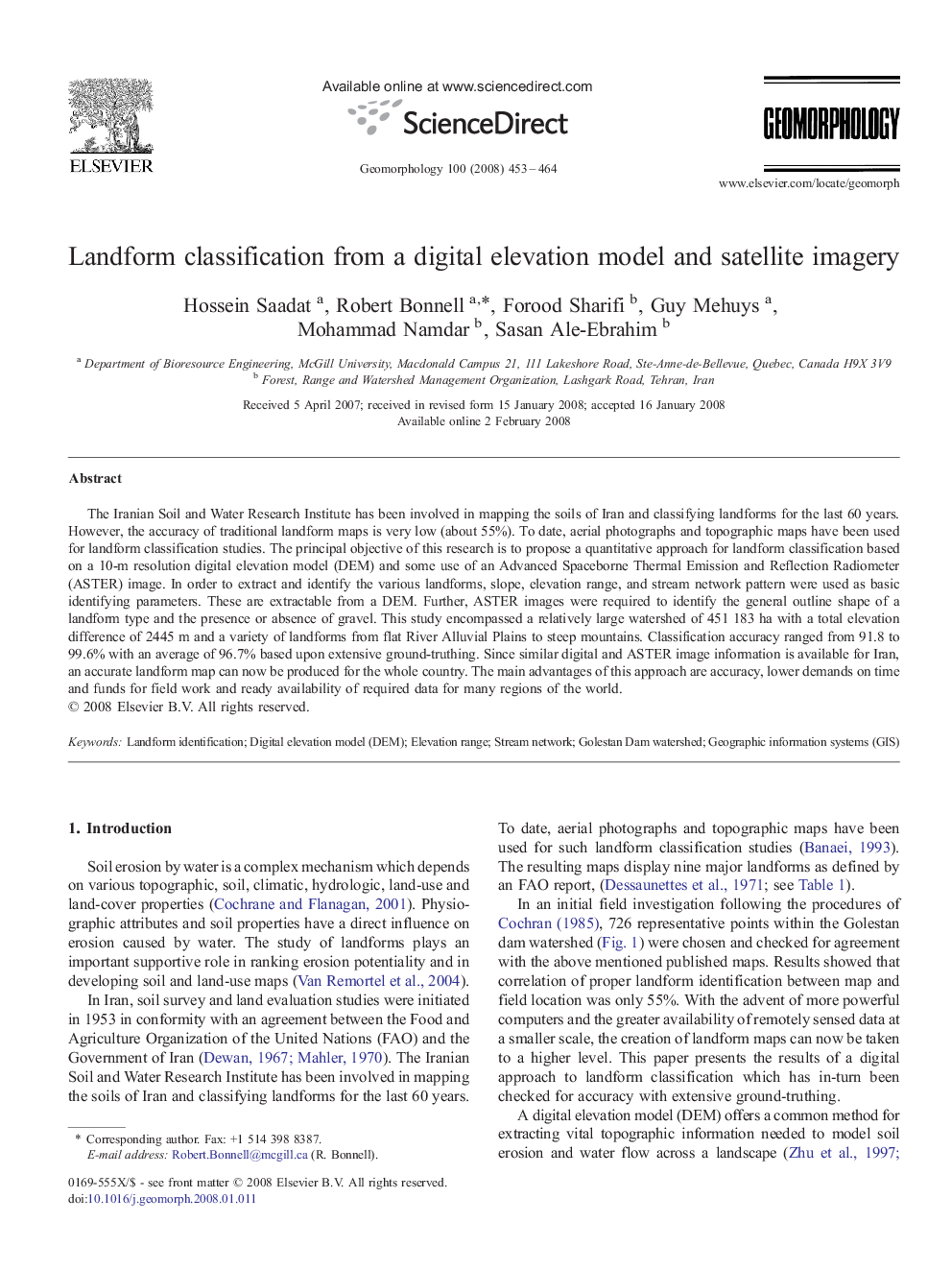| Article ID | Journal | Published Year | Pages | File Type |
|---|---|---|---|---|
| 4686713 | Geomorphology | 2008 | 12 Pages |
The Iranian Soil and Water Research Institute has been involved in mapping the soils of Iran and classifying landforms for the last 60 years. However, the accuracy of traditional landform maps is very low (about 55%). To date, aerial photographs and topographic maps have been used for landform classification studies. The principal objective of this research is to propose a quantitative approach for landform classification based on a 10-m resolution digital elevation model (DEM) and some use of an Advanced Spaceborne Thermal Emission and Reflection Radiometer (ASTER) image. In order to extract and identify the various landforms, slope, elevation range, and stream network pattern were used as basic identifying parameters. These are extractable from a DEM. Further, ASTER images were required to identify the general outline shape of a landform type and the presence or absence of gravel. This study encompassed a relatively large watershed of 451 183 ha with a total elevation difference of 2445 m and a variety of landforms from flat River Alluvial Plains to steep mountains. Classification accuracy ranged from 91.8 to 99.6% with an average of 96.7% based upon extensive ground-truthing. Since similar digital and ASTER image information is available for Iran, an accurate landform map can now be produced for the whole country. The main advantages of this approach are accuracy, lower demands on time and funds for field work and ready availability of required data for many regions of the world.
